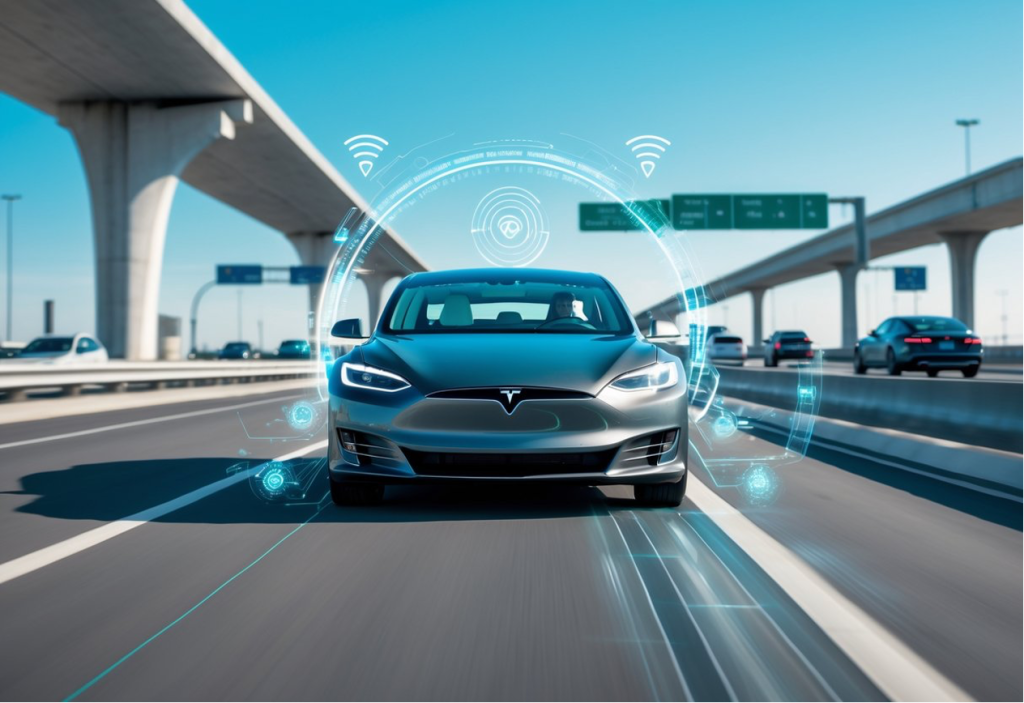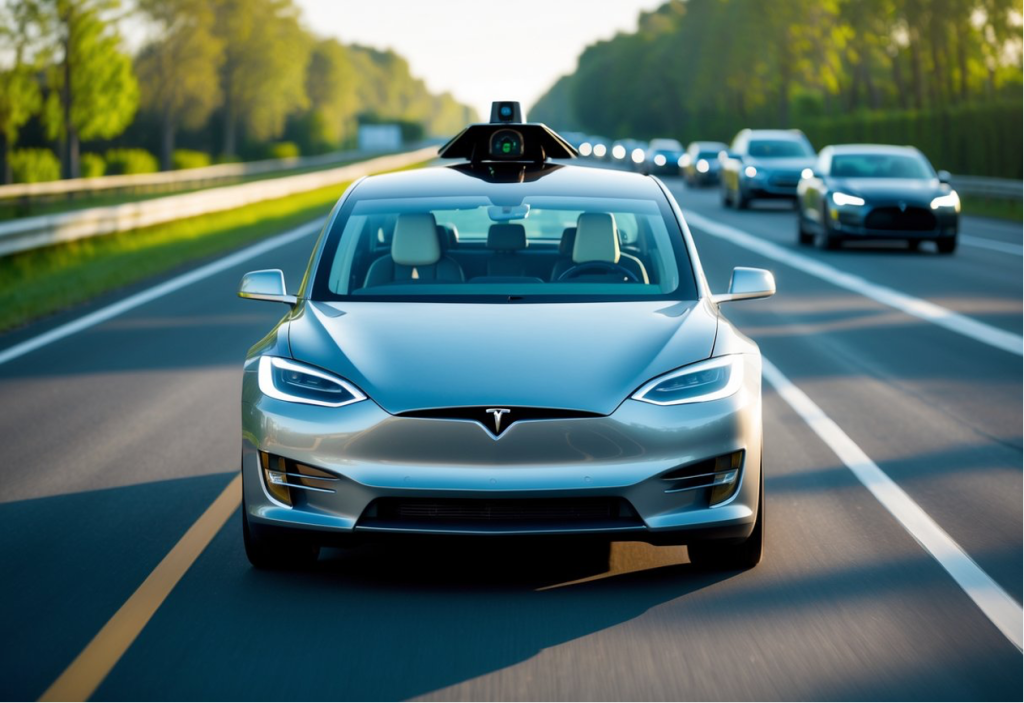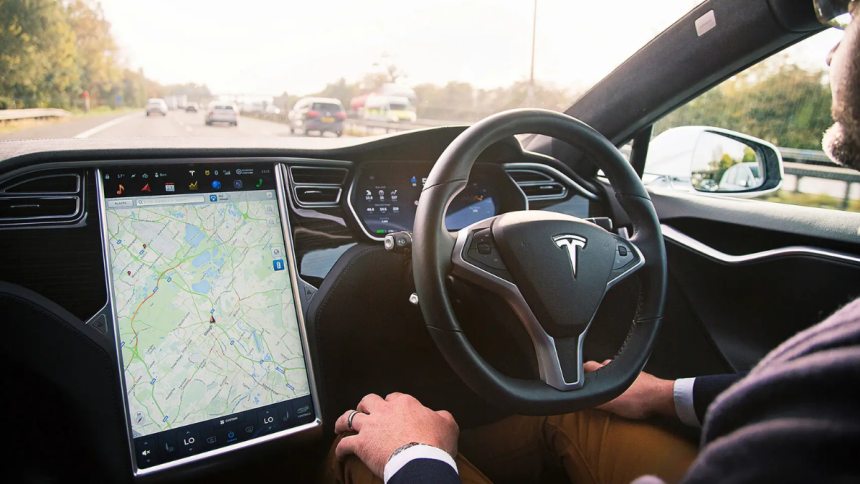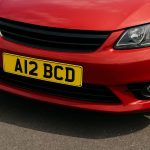Tesla’s Autopilot is a driver-assistance system that uses cameras, radar, and ultrasonic sensors to monitor the vehicle’s surroundings. It processes this data through advanced software to control steering, acceleration, and braking, enabling semi-autonomous highway driving.
The system relies on machine learning and real-time data to adapt to different road conditions and traffic scenarios. Tesla continuously updates Autopilot via over-the-air software improvements, enhancing its capabilities over time.
Autopilot requires active driver supervision and is designed to assist rather than replace human control. Understanding how it works helps clarify its benefits and current limitations.
Overview of Tesla’s Autopilot
Tesla’s Autopilot combines advanced hardware and software to assist drivers with semi-automated driving features. It continuously processes data from cameras, radar, and ultrasonic sensors to monitor the vehicle’s environment and adjust driving behavior accordingly.
The system has evolved significantly since its introduction, expanding its capabilities and refining its performance.
History and Evolution
Tesla introduced Autopilot in 2014 as a suite of driver-assistance features. Initial functions included adaptive cruise control and lane centering. Over time, Tesla upgraded the system with improved sensors and more sophisticated neural network software.
In 2016, Tesla launched Hardware 2, which added eight surround cameras, ultrasonic sensors, and radar, enabling full self-driving capabilities in the future. The software has since been updated frequently via over-the-air updates, improving features such as automatic lane changes, navigation on highways, and traffic-aware cruise control.
Tesla’s approach blends real-time sensor input with machine learning to expand Autopilot’s functionality gradually while maintaining driver supervision requirements.
Key Features
Autopilot includes several core features: Traffic-Aware Cruise Control, which adapts speed based on surrounding vehicles; Autosteer, which helps keep the car in its lane; and Navigate on Autopilot, assisting with highway driving tasks like on-ramps, lane changes, and off-ramps.
Additional features include Auto Lane Change, Autopark, and Summon, which allows the vehicle to move autonomously in parking situations.
The system relies on a combination of eight cameras, 12 ultrasonic sensors, and a forward-facing radar for 360-degree situational awareness. Tesla’s Full Self-Driving (FSD) package builds on Autopilot, offering more advanced capabilities but requires active driver monitoring at all times.
How Autopilot Functions

Tesla’s Autopilot relies on multiple systems working together to perceive the environment, interpret data, and control the vehicle. It continuously processes real-time input and adjusts driving behavior to assist the driver.
Sensor and Hardware Integration
The system uses a combination of cameras, radar, and ultrasonic sensors positioned around the vehicle. Eight surround cameras provide 360-degree visibility, detecting objects up to 250 meters away.
A forward-facing radar adds depth perception and can see through rain, fog, and dust. Ultrasonic sensors monitor close distances to facilitate parking and detect nearby obstacles.
All sensors feed raw data into the onboard computer. Tesla’s custom Full Self-Driving (FSD) computer processes this input to map the surroundings and identify lanes, vehicles, pedestrians, and road signs.
Neural Networks and Machine Learning
Tesla trains neural networks on vast amounts of driving data collected from its fleet. These networks interpret sensor input to recognize road conditions, obstacles, and traffic behaviors.
The system improves over time via over-the-air updates, refining object detection and decision-making algorithms. It uses deep learning to predict what other road users might do next.
This continuous learning enables Autopilot to handle complex scenarios, such as highway merging, lane changes, and traffic-aware cruise control, with growing accuracy and safety.
Components of Tesla’s Autopilot System
Tesla’s Autopilot relies on a combination of hardware and software to detect the environment, analyze hazards, and assist in driving. These components work together to provide real-time awareness and decision-making support that aims to reduce the risk of crashes.
Cameras and Ultrasonic Sensors
Tesla vehicles are equipped with eight surround cameras that cover a 360-degree view. These cameras capture high-resolution images to identify lane markings, traffic signs, vehicles, and pedestrians. The system processes visual data at distances up to 250 meters, allowing early detection of obstacles and road conditions.
Complementing the cameras, ultrasonic sensors are placed around the vehicle’s perimeter. These sensors detect nearby objects at close range, especially useful during low-speed maneuvers like parking. Ultrasonic sensors monitor up to about 8 meters and help in avoiding collisions with static or moving objects. Together, cameras and ultrasonic sensors create a detailed situational map that supports crash avoidance.
Radar Technology
Tesla uses a forward-facing radar that operates through radio waves to scan the area ahead. This radar can penetrate fog, rain, dust, and poor lighting conditions better than cameras alone. It provides a precise measurement of the distance and relative speed of objects up to approximately 160 meters.
Radar data helps track moving vehicles and assess potential collision risks. It works alongside the cameras to confirm object detection and improves the system’s ability to maintain a safe following distance. In complex scenarios, radar’s input plays a critical role in emergency braking and collision mitigation.
AI and Software Algorithms
Tesla’s Autopilot relies heavily on artificial intelligence and advanced software algorithms. Neural networks process data from all sensors to identify objects, predict their movement, and determine appropriate driving responses. This AI constantly learns from millions of miles driven, improving its decision-making.
The software simultaneously manages steering, acceleration, and braking to maintain lane position and adjust speed based on traffic. It also continually evaluates the risk of crashes and intervenes by alerting the driver or applying emergency maneuvers when necessary. Tesla updates this software over the air to enhance safety features and responsiveness.
Supported Driving Capabilities
Tesla’s Autopilot provides specific driving functions that improve safety and convenience. These include maintaining lane position, adjusting speed based on traffic, and steering assistance.
Lane Keeping and Traffic-Aware Cruise Control
Autopilot’s lane keeping uses cameras and sensors to detect lane markings and ensure the vehicle stays centered. It actively corrects steering to prevent drifting out of lanes without driver input.
Traffic-Aware Cruise Control adjusts the car’s speed to maintain a safe distance from the vehicle ahead. It automatically slows down or accelerates based on traffic conditions, reducing the need for manual speed adjustments.
This combination supports smoother highway driving and reduces driver fatigue, especially in congested or stop-and-go traffic. Drivers must remain attentive and ready to take control at any time.
Autosteer Functionality
Autosteer builds on lane keeping by actively controlling steering within clearly marked lanes. It allows Tesla to navigate turns and gentle curves on highways autonomously.
The system continuously monitors surroundings using cameras, radar, and ultrasonic sensors. It calculates safe steering inputs and makes real-time adjustments to maintain lane alignment.
Drivers are required to keep hands on the wheel as a precaution, since Autosteer is not designed for full autonomy. The system may disengage in complex or unclear road conditions, prompting the driver to resume manual control.
Tesla Autopilot’s Limitations
Tesla Autopilot’s performance depends heavily on clear sensor inputs and predictable driving environments. Certain weather and road conditions can impair its ability to operate safely. Additionally, some scenarios remain beyond its current programming and capabilities.
Environmental and Road Conditions
Tesla Autopilot relies on cameras, radar, and ultrasonic sensors. These sensors can be affected by heavy rain, snow, fog, or dirt buildup. For example, dense fog can reduce camera visibility, while snow can block sensors or obscure lane markings.
Poor road markings or unusual construction zones also challenge Autopilot. It may misinterpret or fail to detect lane boundaries, leading to uncertain or incorrect steering decisions.
Auto Pilot’s ability to detect pedestrians or cyclists diminishes in low light or bad weather. Drivers must remain vigilant, especially in conditions like glare, heavy rain, or night driving.
Scenarios Beyond Autopilot’s Scope
Autopilot cannot fully handle complex urban situations, such as navigating unmarked intersections or responding to emergency vehicles. It does not recognize all types of road signs or temporary signals like police directions.
The system also struggles with unpredictable human behavior, including jaywalking pedestrians, aggressive drivers, or sudden lane changes from other vehicles.
Tesla explicitly requires drivers to keep hands on the wheel and be ready to intervene. Autopilot is an assist tool, not a substitute for human judgment in complex or unusual traffic scenarios.
Safety Measures and Features
Tesla’s Autopilot incorporates several key safety systems designed to minimize the risk of crashes and maintain driver engagement. Its technology focuses on continuous monitoring and automated responses to unpredictable traffic situations.
Driver Monitoring Systems
Tesla uses a driver-facing camera inside the cabin to ensure the driver remains attentive. The system tracks eye movement and head position, detecting if the driver is distracted or not looking at the road.
If the driver fails to respond to alerts or keeps looking away for too long, the system issues escalating warnings. Persistent inattention can lead to partial deactivation of Autopilot, requiring the driver to take full control.
This method helps reduce overreliance on automation by ensuring drivers remain ready to intervene. Tesla’s monitoring is less intrusive than traditional hands-on detection but relies heavily on visual cues from the driver’s face.
Emergency Braking and Collision Avoidance
Tesla vehicles equipped with Autopilot use radar, cameras, and ultrasonic sensors to detect potential collisions. The emergency braking system activates automatically to reduce speed or stop the car if a crash is imminent and the driver does not react.
Collision avoidance features can also steer the vehicle away from obstacles when necessary. These systems analyze speed, distance, and trajectory of surrounding objects to decide when intervention is required.
This technology aims to reduce crash severity or prevent crashes altogether by providing real-time assessments and timely automated responses. It works continuously, even when Autopilot is not active but engaged through other safety modes.
Incidents and Crash Analysis
Tesla’s Autopilot has been involved in multiple crashes that raised questions about its safety and limitations. These incidents often highlight the system’s current challenges in real-world use and provide data for improving its technology and regulation.
High-Profile Crashes Involving Autopilot
Several widely reported crashes involved Tesla vehicles operating on Autopilot, including fatal accidents. One notable case occurred in 2018 in California, where the system failed to detect a crossing truck. The driver did not intervene in time, leading to a high-impact collision.
In another case in McAllen, Texas, experts pointed to driver misuse and system limitations as factors, and local car accident lawyers have noted increasing legal inquiries related to Autopilot crashes. Investigations often reveal that the system does not replace driver attention and requires active supervision.
Tesla’s Autopilot has also shown difficulty with stationary objects and complex highway scenarios, which has been a recurring issue in several accidents. These crashes have prompted regulatory scrutiny and recommendations for clearer warnings to drivers.
Lessons Learned from Past Accidents
Accident analyses have emphasized driver overreliance on Autopilot and insufficient engagement as key causes. Data shows many crashes happen when drivers do not keep their hands on the wheel or fail to monitor the system actively.
Manufacturers and safety authorities now push for better driver monitoring technologies to reduce misuse. Tesla has implemented visual and audio alerts to ensure drivers stay attentive, though critics argue these measures remain imperfect.
Legal experts, including McAllen car accident lawyers, advise drivers to treat Autopilot as an assist feature rather than full self-driving technology. Understanding the system’s limitations can prevent accidents and reduce liability.
Clear communication about Autopilot’s capabilities and risks continues to be vital for improving road safety and avoiding misunderstandings that lead to crashes.
Legal and Regulatory Landscape

Tesla’s Autopilot operates within a complex framework of federal and state regulations. These rules address safety standards, liability, and driver responsibilities, shaping how the technology can be used and monitored.
Government Oversight
The National Highway Traffic Safety Administration (NHTSA) governs aspects of Tesla’s Autopilot, requiring compliance with vehicle safety standards. It investigates crashes where Autopilot is involved and may issue recalls or safety recommendations.
Individual states also regulate Autopilot use. Some, like California, mandate clear warnings to drivers that Autopilot requires active supervision. Enforcement varies, with penalties possible if misuse leads to accidents.
Congress is considering legislation to define responsibilities for autonomous features. This includes setting testing protocols and liability frameworks, which could influence Tesla’s system deployment.
Implications for Drivers
Drivers must remain attentive and ready to take control at all times while Autopilot is active. Failure to do so can lead to legal consequences if an accident occurs. Courts often examine driver behavior closely in such cases.
Liability in crashes involving Tesla Autopilot can be complex. Depending on the circumstances, responsibility may fall on the driver, Tesla, or both. Legal experts, including McAllen car accident lawyers, stress careful documentation and consultation after incidents.
Insurance providers are adjusting policies to reflect risks associated with semi-autonomous driving. Some increase premiums for Autopilot users, while others offer discounts for safe usage monitored through telematics.
User Experience and Real-World Performance
Tesla’s Autopilot receives varied feedback on usability and reliability. Users report specific behaviors in different driving conditions, and documented case studies reveal both successes and limitations.
Driver Testimonials
Many Tesla drivers highlight the convenience Autopilot offers on highways, particularly during long commutes. Users note that the system effectively maintains lane position and adjusts speed to traffic flow on clear, well-marked roads.
However, some drivers report that Autopilot struggles in complex urban environments or in poor weather conditions. Common issues include sudden braking or hesitations when approaching sharp curves or unclear lane markings.
Drivers frequently emphasize the importance of staying attentive and ready to take control. Tesla updates and improvements are often mentioned as gradually enhancing the system’s performance over time.
Regulatory reviews continue to examine data from real-world usage to balance safety benefits against potential risks inherent in partial automation systems.
The Future of Tesla Autopilot
Tesla continues to develop its Autopilot system with significant software updates and hardware improvements. These advancements aim to move toward full self-driving capabilities and influence the broader automotive market.
Planned Updates and Full Self-Driving
Tesla plans to enhance its Full Self-Driving (FSD) software by increasing the system’s ability to handle complex urban environments. The next major updates focus on better object recognition, smoother lane changes, and improved decision-making at intersections.
Tesla uses over-the-air updates to deliver these improvements, allowing vehicles to gain new features without requiring physical recalls. The company’s data collection from millions of miles driven supports the refinement of neural networks that power Autopilot’s AI.
Hardware upgrades are also part of the plan. Newer Tesla models include updated computer chips designed to process data faster and support more advanced driver assistance functions. However, Tesla emphasizes that even with FSD, driver attention remains mandatory.
Market Impact and Industry Influence
Tesla’s Autopilot pushes competitors to accelerate their autonomous driving programs. The company has set a benchmark for consumer-ready semi-autonomous features, influencing the entire automotive sector.
Other manufacturers now integrate similar systems, often citing Tesla’s advancements in sensor fusion and artificial intelligence. Tesla’s approach to receiving continuous software updates is also becoming an industry standard widely adopted beyond electric vehicles.
Regulatory bodies closely monitor Tesla’s progress. Their data and deployment strategies are shaping policies on autonomous driving safety and liability in several countries. This regulatory influence contributes to broader acceptance and cautious development of driverless technology.
Lynn Martelli is an editor at Readability. She received her MFA in Creative Writing from Antioch University and has worked as an editor for over 10 years. Lynn has edited a wide variety of books, including fiction, non-fiction, memoirs, and more. In her free time, Lynn enjoys reading, writing, and spending time with her family and friends.















